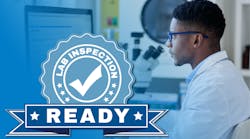Upgrading a laboratory information system (LIS) is a large and expensive undertaking. Given the cost and complexity of the systems, labs choose a relationship with a product and vendor that they’ll be involved with for years to come.
So what factors are important to assess before embarking on this journey?
Kim Futrell, MT(ASCP), MSHI, Product Marketing Manager at Orchard Software, explains, “An LIS can boost laboratory productivity and efficiency and help free laboratorians for other hands-on tasks. Therefore, selecting the best-fit LIS for your lab is extremely important. Because every laboratory is unique, you must select an LIS that meets the specific requirements of your testing menu and your patient population.”In addition to selecting LIS software based on test menus, labs should choose a system with maximum functionality, allowing them to automate and integrate all workflows — from pre-analytical tasks to revenue cycle management.
A system that supports all clinical disciplines, such as molecular and pathology, also is important. “This lowers the cost of ownership, simplifies the upgrade cycle and eases the end-user experience,” explains Bob Voelkner, Vice President of Sales and Marketing, LabVantage Solutions.
Avunjian notes that a flexible software architecture will allow labs to configure the system themselves to suit their needs now as well as in the future.
In addition to assessing features and functionality, labs will need to choose between an on-site solution or a cloud-based option. Not all vendors offer a cloud-based option but many do.
Futrell explained the three main benefits that cloud services offer an LIS. First, offloading the bulk of security measures to a cloud vendor makes data more secure and reduces the burden for a lab’s internal IT staff. Second, subscription services eliminate upfront capital expenditures and minimize internal maintenance costs. Finally, cloud systems automate backups and disaster recovery options, increasing redundancy and minimizing downtime.
Labs should not only evaluate the software but the vendor behind the product.
Avunjian suggested, “Look for a vendor that’s aligned with the laboratory’s long-term success. This is often reflected in the vendor’s pricing model. If the pricing model includes large and front-loaded capital expenditures, this can hamper or delay the lab’s ability to scale up.”
Futrell adds, “First, you need an LIS vendor partner with enough foresight and flexibility to be able to change and grow alongside your organization. Second, you need reliable service and support for the lifetime of the software. And third, you must consider the total cost of ownership (TCO) in your organization’s budget.”










